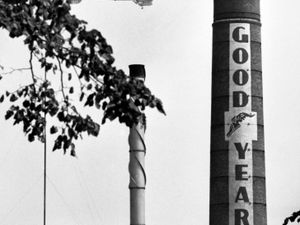Seven Cornfields campaigners send strong message to developers
It's the peaceful countryside setting which could be lost to a huge new housing estate. Mark Andrews spoke with the people fighting to save Seven Cornfields.
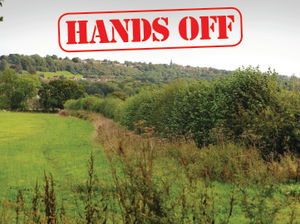
Dave Whitfield paints a picture of a childhood straight from the pages of a Just William book, with the Seven Cornfields serving as the backdrop.
“I used to play over there with my friends from school, from the age of six. We would be out all day, building dens and all sorts,” says the retired electrician, wistfully.
“It’s a beautiful place.”
And when he got the chance of returning to his childhood stamping ground eight years ago, he didn’t need to think twice.
“It was like coming back home, the fields were still the same.”
But a dark cloud now hangs over the Seven Cornfields that Mr Whitfield grew up with half a century ago.
The vast expanse of farmland around Sedgley and Penn, which has for decades served as the buffer between Dudley and Wolverhampton, could soon be developed for housing, with 1,300 homes proposed for the site.
Mr Whitfield, 56, lives in Ryecroft Cottages, a picturesque terrace of former farmworkers’ cottages on the Wolverhampton side of the fields.
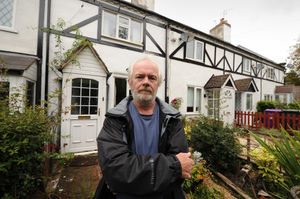
As he picks up his fresh eggs from a smallholding at the end of his road, he finds it hard to comprehend why it is even being considered.
“In future years we are going to need to grow our own food, we are going to need farmland,” he says.
“How are we going to grow our food when we have built on it? Are we going to expect China to feed us?”
Mr Whitfield accepts there is a need for more housing, but says brownfield sites should be developed first.
“It is because brownfield sites cost more to clean up than green belt sites, and because the green belt sites tend to be in the better areas where they can charge more for the houses.
"It is all about money.”
He is not alone.
A petition organised by Wolverhampton Liberal Democrat campaigner Nick Machnik-Foster was signed by 5,000 people within a fortnight of its launch.
St Bartholomew’s Church in Penn was packed to the rafters at a public meeting, with 250 people – including Dudley North MP Ian Austin – voicing their opposition to the plans.
Wolverhampton South West MP Eleanor Smith is also opposed to the development, as is West Midlands Mayor Andy Street.
The row has even reached Downing Street, with Prime Minister Boris Johnson lending his support to the Save The Seven Cornfields campaign.
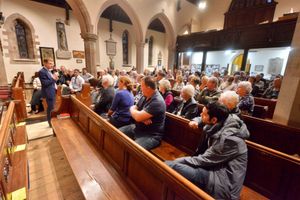
The proposed development site consists of 284 acres of land, predominantly falling under the administration of South Staffordshire Council, although part of it is covered by Wolverhampton.
The adjoining Alder Coppice, a designated ancient woodlands which comes under Dudley Council, is not part of the proposals, and neither is the nearby Penn Common, although the impact for both sites of 1,300 new homes just yards away is plain for all to see.
Across the fields on the Dudley side, Helen Grocott feels that if the development goes ahead, it will deny her 23-month-old son Milo the sort of idyllic childhood that Mr Whitfield enjoyed.
“Milo loves the tractor when it comes past,” she says, looking out at the rolling hills beyond her garden in a state of disbelief.
She says that if the scheme goes ahead, the uninhibited view towards Penn Common and Baggeridge Country Park will be lost forever, with new houses just yards from her back garden.
“It was fantastic for him to be able to have all this in his back garden, and the thought of them putting 1,300 homes on there is heartbreaking.
“My husband said ‘it’s like they sold us a dream, and then took it away’, and that’s how we feel,” she says.
Mrs Grocott, 35, had just got married when she and husband Paul moved into their new detached house in Charles Hayward Avenue, Sedgley, in 2013.
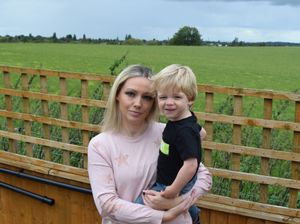
She said it was only the view from her garden that persuaded her to move from Hampshire.
“Paul wanted to be closer to his family, but I wasn’t that keen on leaving Hampshire,” she says.
“It was this house, and this field, that sold it to me. They offered us the showhouse up the road, which was fully fitted out, and tens of thousands of pounds less expensive, but we paid the tens of thousands of pounds extra to live in this house with this view.
“It felt like a dream, we had just got married and we had this beautiful family home.
“We have deer walking past, we know there are woodpeckers there, you can really hear the owls at night.
“We were told we could only have a 4ft fence at the back of our garden because it’s a bat run. I can’t have a fence, but they can put 1,300 homes there.”
She says that when she has hosted visitors from Hampshire, they have been amazed at the views from her house.
“I have got relatives in Australia who came to stay last year, they stayed in our back bedroom, and they couldn’t believe the view from the window.
“You get the most beautiful sunsets, and at night you can see all the lights sparkling in the distance.”
Her mother Sue Parker, who lives in Laburnum Road, Ettingshall Park, is not directly affected by the plans, but fears that any development will inevitably put pressure on the services such as schools and doctors’ surgeries.
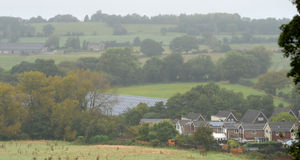
For Clare Richardson, 29, of Sunningdale Road, Sedgley, the cornfields hold a lifetime of memories.
She has lived in the house she now shares with husband Paul and two-year-old daughter Olivia since she was born.
“The reason we live in that house is for the views,” says Mrs Richardson, who works for an estate agent.
She is keen that Olivia will be able to enjoy the same vista that she experienced as a child.
“It’s beautiful in the summer, with all the fresh air, and none of the smoke,” she adds.
“It’s why we don’t live in the middle of the city, it’s what we want. If everywhere is concreted over, what is that going to do for the environment?”
Back in Penn, Carly Birchell of Brenton Road is walking her puppy Lunabelle next to what she fears will be the access road for the new housing development.
Like Mrs Grocott, the 39-year-old is worried about the loss of green space for her sons Noah, seven, and Toby, four.
Mrs Birchell and her husband Chris, also 39, have lived in their house for 10 years.
She says the proximity to the fields were a major reason why they bought it.
“Chris grew up here, and for him it is like losing part of his childhood,” she says.
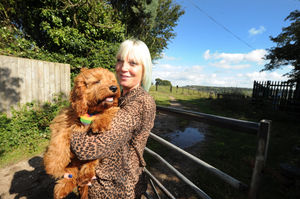
“It’s going to have a massive impact on my children, it’s so beautiful down here, I walk here when I’m taking the kids out.
“I don’t see why they can’t build houses on brownfield sites, rather than destroying the countryside.”
It should be stressed that at this stage, the plans represent nothing more than a proposed change to planning policy.
By law, all local authorities have to produce a plan on how to meet demand for housing, and invite developers to suggest suitable sites.
This has prompted Barratt Homes and David Wilson Homes to express an interest in developing the Seven Cornfields.
Dudley Council, the lead planning authority for the Black Country Plan, and South Staffordshire Council, will next year publish a draft of the proposals, and people will be formally invited to have their say in a consultation towards the end of the year.
Even if the proposals are approved in the new development plans, any future developments will still require planning permission.
Former Walsall football star Chris Marsh, who grew up in Sedgley, has backed the protests.
“Seven Cornfields is an area that has so many fond memories for me and my family,” says the 49-year-old.
“It’s where I grew up and where I played football with my friends and two brothers.
"It would be absolutely scandalous to turn such a naturally beautiful area into yet another housing estate.”
Mrs Grocott says television naturalist Mark O’Shea, is also backing the campaigners.
But there does seem to be a bit of scepticism about the planning process.
“I understand there’s got to be new housing, but it seems a bit secretive, the way they’ve gone about it,” says Mrs Birchell.
“People have told me it isn’t going to happen, but you see what has happened down Lower Penn with the nursery, and you do wonder.”
The nursery?
“They built a big nursery on land behind Spring Hill,” she says.
“Nobody knew anything about it until it was being built.”
Sandhills Day Nursery has since lodged a partially retrospective planning application with South Staffordshire Council, but the decision has yet to be made.
The development led to angry protests at an open day for the nursery in March this year.
In reality, there is little connection between the dispute about the day nursery and the future of the Seven Cornfields, but it is symptomatic of a deep-rooted suspicion among some people that big business will win the day.
COMMENT: Seven Cornfields is litmus test for future of region's green belt
It is a clash between two distinct needs.
On one hand the region desperately needs new affordable homes to cater for a rising population, and on the other is an overwhelming desire to protect its precious green fields, writes Express & Star's Peter Madeley.
The plans for the Seven Cornfields development give a perfect example of the conflict that exists since the government changed the national planning policy framework in March 2018.
The move saw ministers overrule environmental campaigners and parish councils who called for a blanket ban on building on the green belt, while also ruling out the further relaxation of the green belt rules demanded by developers.
Under current laws, land owners can put forward plots for homes, offering developers the opportunity to submit plans for schemes.
In the decade to August 2018, a total of around 24,000 homes were built on green belt land in the UK, including 8,000 in 2017 alone.
Many of these developments have occurred on brownfield sites within the green belt – often derelict land on the outskirts of towns and cities that was initially intended to prevent urban sprawl.
But the Seven Cornfields site is very different.
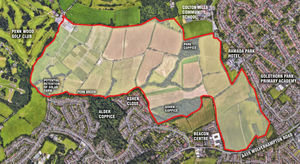
The 240-acre plot is open countryside, serving as a buffer between Dudley and Wolverhampton where dog walkers and ramblers flock to enjoy the peace and tranquillity.
For many people it has been something of a hidden gem until now, having been thrust under the spotlight due to an agreement struck between the landowner and Barratt Homes for a 1,300-home housing estate.
But to get the scheme up and running planning permission is required.
The West Midlands Combined Authority – the region's super-council which is against building on the green belt – has restricted powers over land redevelopment.
It is not a planning authority so relies on collaboration with local councils – which rule over planning applications – in pursuit of its 'brownfield first' policy.
Mayor Andy Street has made his views clear on the issue.
While he admits that the region's housing target of 215,000 homes by 2031 is a bold one, the Mayor believes that with the right government support for brownfield sites it is possible that the green belt may just survive untouched.
The Seven Cornfields scheme has met with widespread opposition from the public and politicians, with MPs and councillors from all parties speaking out against it.
Whether people power wins out will be in the hands of council planners.
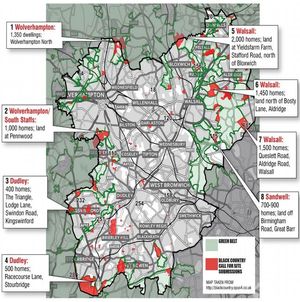
This is not the only large scale development on the table for the West Midlands.
Hundreds of plots have been suggested for homes as part of the Black Country Core Strategy's call for sites, including plans for 1,500 houses off Foxcote Farm, Wollescote; 1,500 homes off Queslett Road, Walsall; and 500 homes on Racecourse Lane, Stourbridge.
So in many respects, Seven Cornfields will be viewed as a litmus test for the future of the region's green belt.
Landowners and developers will certainly smell blood should the scheme be given the green light.



